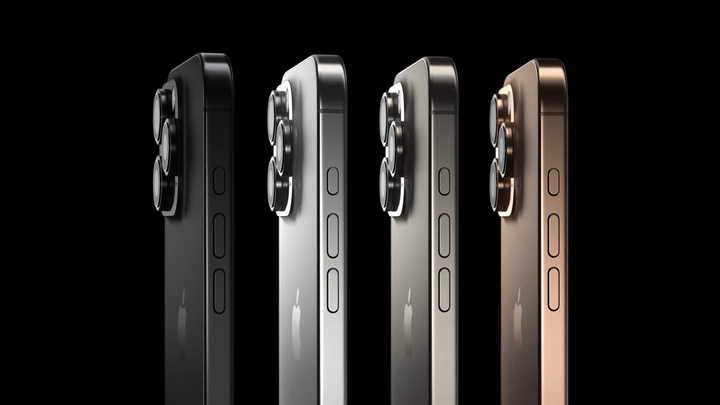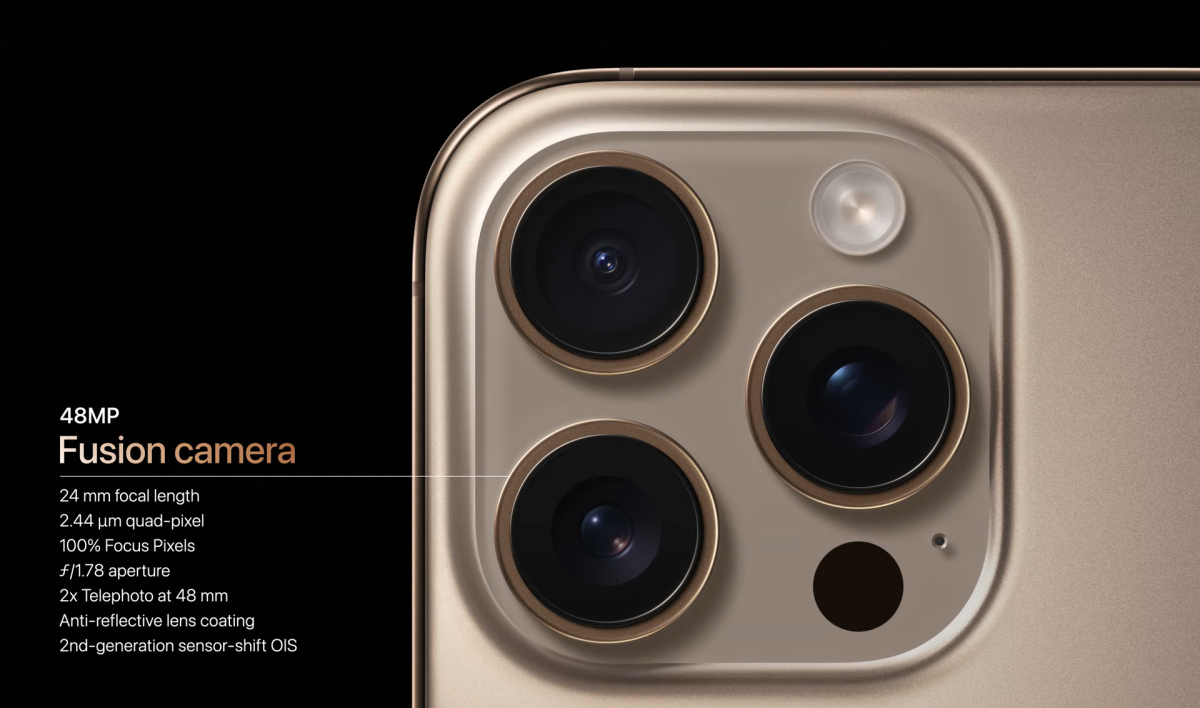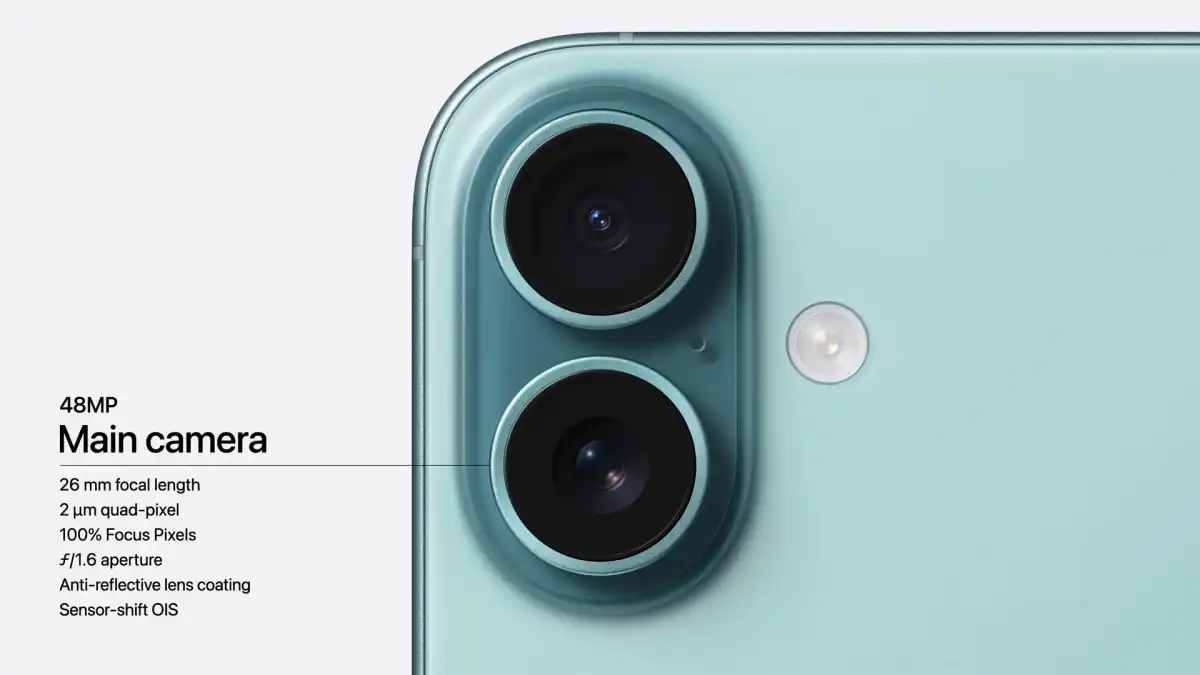The annual iPhone event in Apple Park took place today, and the team finally revealed the iPhone 16 series.
As impressive as the iPhone 15 range is, there is still potential for development. Apple has completely mastered some parts of the iPhone, but it still lags behind Android rivals in others, particularly when it comes to AI features.
So, obviously, many people are looking forward to the latest edition of the iPhone, which will be available for purchase shortly. If this applies to you, here’s all you need to know.
When will the iPhone 16 be released?
Apple unveiled the new iPhone on September 9, 2024, at the Steve Jobs Theater in Apple Park. The new phones were unveiled alongside the Apple Watch Series 10 and the new AirPods.
Pre-orders for these devices will begin on Friday, September 13, with the first wave of releases reaching shelves the following week, Friday, September 20, 2024.
How much does the iPhone 16 cost?
Here are the launch prices for the iPhone 16 range:
- iPhone 16 (128GB) – $799/£799
- iPhone 16 Plus (128GB) – $899/£899
- iPhone 16 Pro (128GB) – $999/£999
- iPhone 16 Pro Max (256GB) – $1,199/£1,199
These are the same costs as the previous iPhone 15 range; leaker yeux1122 on South Korean platform Naver claims that the titanium frame on the iPhone 16 models was less expensive to manufacture, which could explain why there have been no significant price hikes.
The phones will be available in storage sizes of 128GB, 256GB, and 512GB, with the Pro models offering the standard 1TB option.
What specs and features does the iPhone 16 have?
This generation, Apple is focusing heavily on artificial intelligence, with software advancements for photo editing, productivity tools, and voice assistants. Other notable enhancements include significant changes to the camera button, more distinctive hues, and longer battery life.
The iPhone 16 series offers four smartphones to select from; here’s the breakdown:
Design
Let’s start with the normal iPhone 16 and 16 Plus.
These phones are available in five colors: white, black, ultramarine, teal, and pink. The last three are new additions. These are composed of aerospace aluminium and have IP68 water and dust resistance, which is the same as the Pro phones.

As predicted by leaks, Apple has chosen a vertical camera layout nestled into a pill-shaped hump for the 16 and 16 Plus iPhones.
This design bears homage to past iPhone models, particularly the iPhone X, which had a pill-shaped camera with a thin module. Although the iPhone 12 used a vertical camera configuration, it had a larger square bump to accommodate the flash and microphone.
This camera bump includes two unique camera rings for the wide and ultrawide lenses, but does not change the position of the flash or camera lenses in this latest model.
The Capture Button is now pressure-sensitive and rebranded as ‘Camera Control’. In addition to opening and capturing photos, users may drag their finger along the button to manipulate zoom, focus, and other settings. Furthermore, a lengthy push on this button will now record video.
The mute button has been replaced by the Action Button, which was previously unique to the iPhone 15 Pro line and not available on the ordinary versions. This can be used to set the phone to silent mode, open apps, activate the torch, and more.

Speaking of which, the iPhone 16 Pro and Pro Max have seen major design changes. In addition to the standard Black Titanium, White Titanium, and Natural Titanium finishes, there’s a new bronze color called Desert Titanium. The phone’s textured glass back is slightly softer in tone than the chassis.
The camera module triple design stays unchanged from the previous iteration, and the Pro models now enable the new Camera Control capabilities. The speech also stated that these phones feature the thinnest borders of any Apple product.
The Pro and Pro Max are made from Grade 5 Titanium, which should be more resistant to scratches. Here are the dimensions for each phone:
- iPhone 16 – 147.6 x 71.6 x 7.8mm, 170g
- iPhone 16 Plus – 160.9 x 77.8 x 7.8mm, 199g
- iPhone 16 Pro – 149.6 x 71.5 x 8.25mm, 199g
- iPhone 16 Pro Max – 163 x 77.6 x 8.25mm, 227g
Display
The standard iPhone 16 and 16 Plus keep the same dimensions as their predecessors, measuring 6.1 inches for the regular and 6.7 inches for the Plus, with resolutions of 2556 x 1179 and 2769 x 1290, respectively, at 460 ppi.
However, the iPhone 16 Pro and Pro Max have bigger OLED Super Retina XDR displays. The iPhone 16 Pro features a 6.3-inch display, while the iPhone 16 Pro Max has a 6.9-inch screen. This is the largest iPhone display to date.
The iPhone 16 Pro features a resolution of 2622 x 1206, while the Pro Max has a 2868 x 1320 panel, both with 460 ppi. All phones are capable of reaching 2,000 nits of peak brightness.
The iPhone 16 Pro and 16 Pro Max also feature the smallest screen bezels ever seen on an Apple handset. Exact dimensions have not been confirmed, however a Chinese leaker (via GSMArena) and Ice Universe reported 1.2mm on the iPhone 16 Pro and 1.15mm on the Pro Max.
For comparison, the current iPhone 15 Pro and iPhone 15 Pro Max have 1.71mm and 1.55mm bezels, respectively. These improvements bring the iPhone 16 range closer to a true ‘bezel-less’ appearance.
All of the screens in the range feature Ceramic Shield protection, which Apple claims is twice as durable as glass. There was no mention of new panel technology, so it’s presumed they’re the same as those seen on the iPhone 15 series. The Pro phones will feature an adjustable 120Hz refresh rate for gaming.

There was anticipation that Apple will relocate its Face ID sensors under the display, but this was not verified during the event; 9to5Mac believes this will not happen until around 2026.
There is also no sign that Apple will follow the trend of many Android phones and include an under-display fingerprint sensor.
Performance
When Apple released the new 3nm CPU for the iPhone 15 Pro models, it also altered the chip’s nomenclature from A17 Bionic to A17 Pro.
The new moniker suggested that this was a special version of the chip for the Pro models, leading us to believe that the iPhone 16 will receive a stripped-down version of the chip known as the A17 Bionic.
However, Apple stunned us by stating that the iPhone 16 and 16 Plus will instead receive the A18, while the Pro line would receive the A18 Pro.

The A18 contains a 16-core neural engine that is designed to power all of the smartphone’s planned AI features. There’s a 6-core CPU that’s 30% quicker than the A16 Bionic (the chip in the iPhone 15) and a 5-core GPU for better graphics – ideal for gamers.
Meanwhile, the A18 Pro will make the iPhone 16 Pro and Pro Max 15% faster than prior generations, thanks to a 6-core GPU and 6-core CPU with 2 performance cores and 4 efficiency cores.
Cameras
Apple has added a new 48Mp ultrawide lens to the iPhone 16 Pro and Pro Max, a significant upgrade over the old 12Mp. Like the 48Mp main, it will most likely use pixel binning (combining four pixels into one) for 12Mp photos by default. This lens has a 120° field of view and an aperture of ƒ/2.2.
Both iPhone 15 Pro models will have enhanced 12Mp telephoto cameras that provide 5x optical zoom and up to 25x digital zoom. Meanwhile, the primary 48Mp camera appears to have the same specifications as its predecessor, albeit with a rebranded ‘Fusion’ label, implying that the telephoto capabilities can be used with the main camera.

The iPhone 16 and 16 Plus will have two vertically aligned cameras: a 48Mp primary camera with 2x telephoto zoom and an enhanced 12Mp ultrawide lens with autofocus, as well as a ƒ/2.2 aperture for better low-light performance. These non-Pro models will also provide macro photography for the first time.
The new vertical design on the ordinary versions enables them to support spatial videos. The Pro models will handle 4K video at 120fps with Dolby Vision and provide customers more control over sound with the Audio Mix feature, which allows them to adjust the varying degrees of background noise.

As previously stated, all iPhone 16 models incorporate the new pressure-sensitive Camera Control, inspired by Sony, which employs trackpad-like movements for zooming and other tasks.
Apple also stated that background object removal will be available for editing, akin to Google’s Magic Eraser.
Battery & charging
The iPhone 16 models have longer lifespans; indeed, Apple boasts that the iPhone 16 Pro Max has the best battery life of any iPhone, period.
Apple has not revealed the battery sizes at the time of writing, but according to its website, the iPhone 16 can last up to 18 hours of streaming playing and the Plus up to 24 hours.
Meanwhile, the iPhone 16 Pro can stream video for up to 22 hours, while the Pro Max can do 29 hours of Netflix and chill.
Software
Check out our round-up of all the software announcements from Apple’s WWDC presentation, including iOS 18.
The most highly anticipated feature is access to Apple Intelligence. However, the new phones will initially lack Apple’s AI capability, which will be added a month later via a software update in the United States. The new features will not be available to UK customers until December.
The AI software is kept private and secure by running through Private Cloud Compute, allowing customers to use numerous on-device functions that are not shared via the Cloud – however some activities will still involve Apple servers. Apple also promised to having this security independently reviewed by specialists on a regular basis.

Apple Intelligence capabilities include short suggested replies in Messages and Mail, a Reduce Interruptions Focus mode that selectively allows urgent notifications, and a Safari Reader Mode that summarizes web pages. Writing Tools provide professional or friendly text editing and proofreading, and another option records and transcribes calls.
Siri’s improvements include the ability to process erroneous starts in language and the option to use Siri via text rather than the microphone.
Users can create their own emojis and enjoy improved search functionality in their photo and video files. The camera may also be utilized as Google Lens, allowing users to obtain information about things by taking a snapshot.
Apple Intelligence pits Apple against Google Gemini, OpenAI’s ChatGPT, and Microsoft’s Copilot.
Of course, these phones will include standard safety features such as Emergency SOS by satellite, Crash Detection, and Roadside Assistance via satellite.
Connectivity
Apple began transitioning to USB-C technology with the iPhone 15 lineup, and this trend continues with the iPhone 16 models.
Apple has been building its own 5G modem chips, although they are not yet available for phones in 2024. However, the iPhone 16 will include Wi-Fi 7 technology.

Apple’s AR/VR headset, the Vision Pro, is currently for sale. We anticipate that the business will make every effort to easily incorporate it into the ecosystem, with the iPhone 16 series serving as a likely entry point.
iPhone 16 Ultra
One of the more intriguing rumors that circulated even before the iPhone 15 introduction was the prospect of even another model, the iPhone 15 (or now 16) Ultra.
However, this smartphone has yet to emerge.
It is expected to be even more expensive than the existing portfolio, but in exchange, users will receive numerous enhancements. It’s expected to have an improved, faster version of any chip we’ve seen before (probably with more GPU cores), a larger screen, and possibly a portless design.


